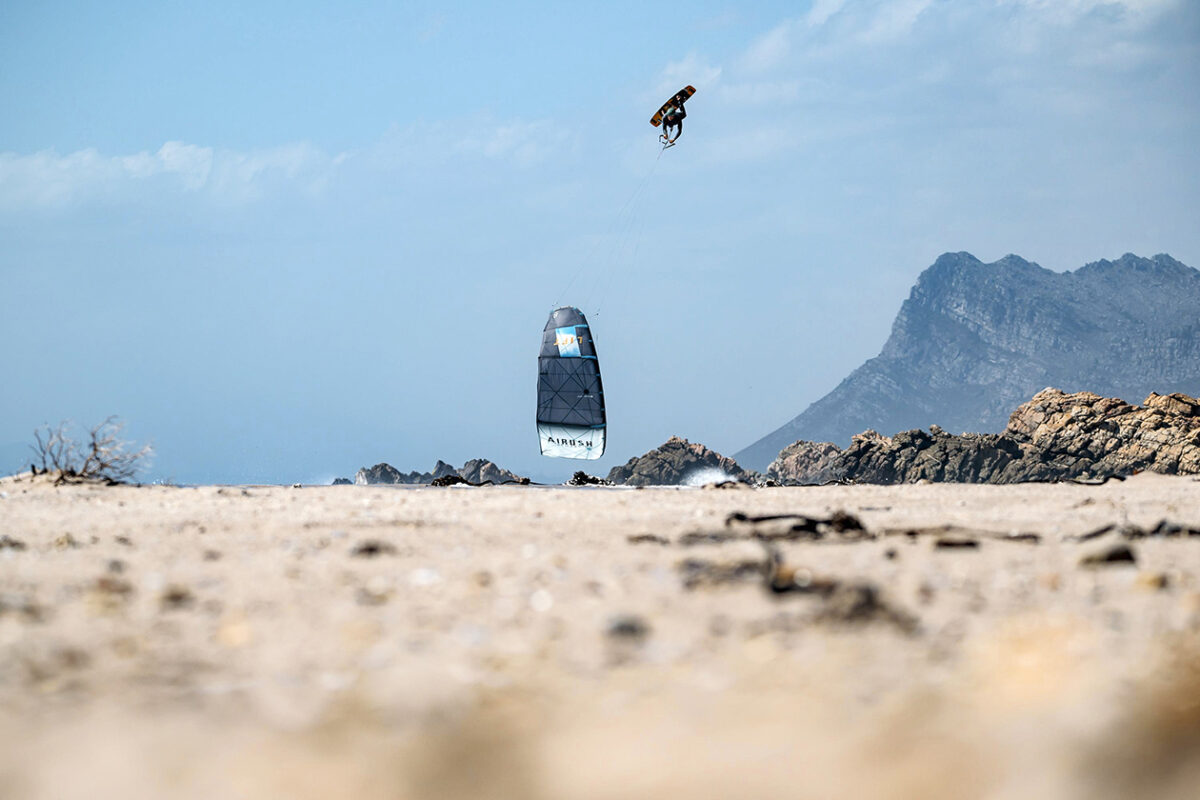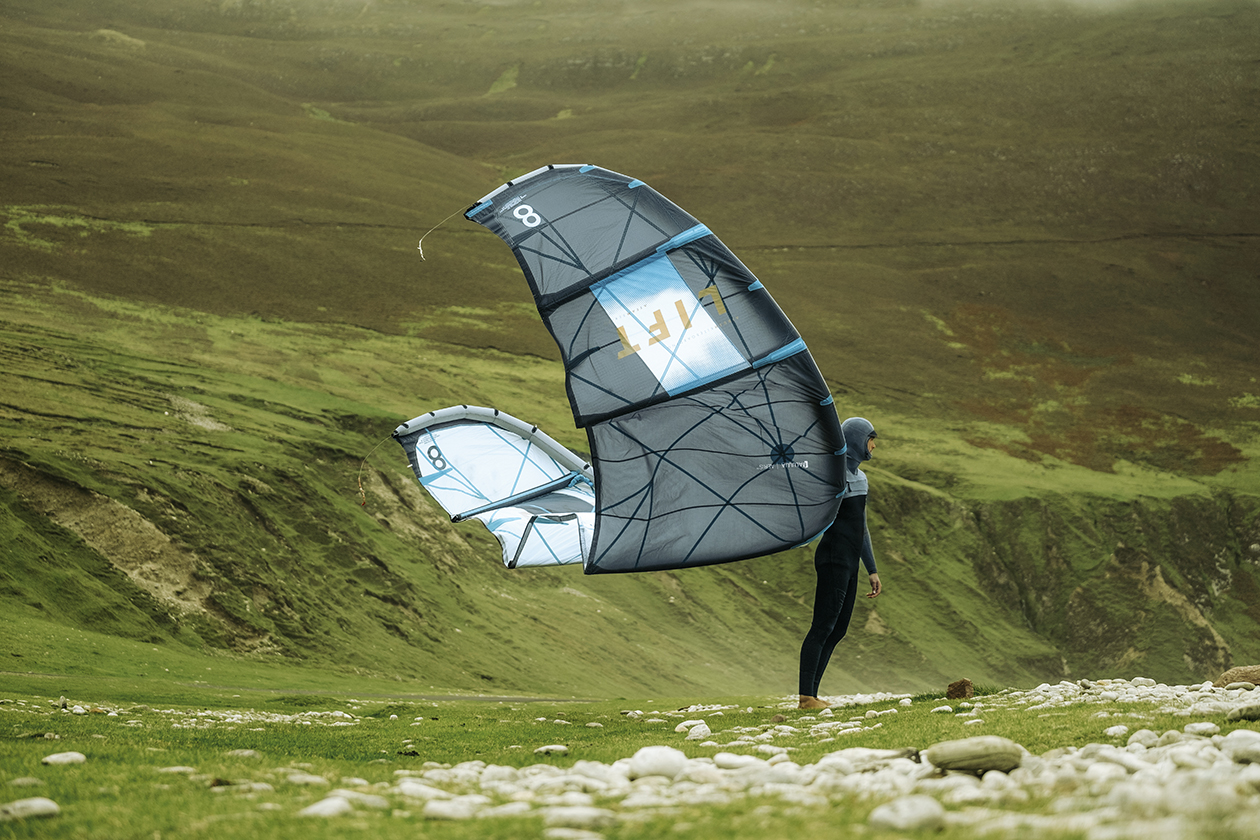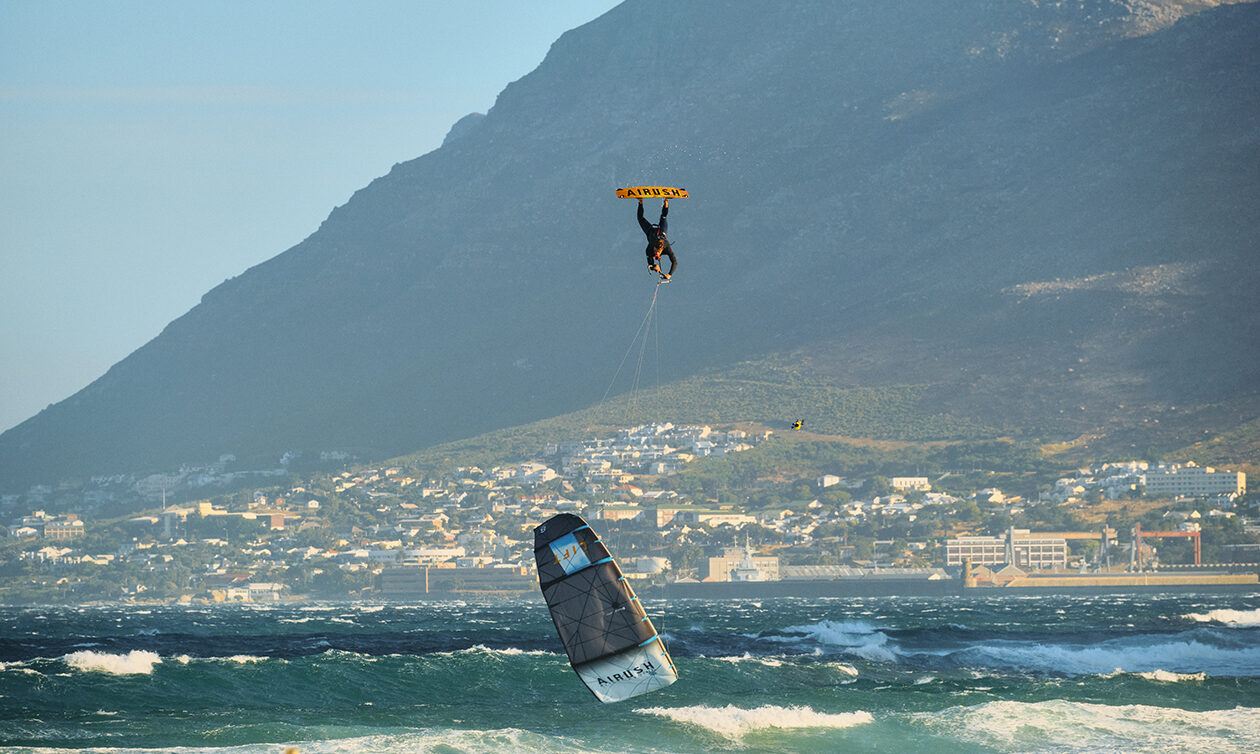Airush Lift Team & Aluula Aeris
Airush has expanded their Team Series Ultra PE platform with the launch of the Lift Team, featuring the next generation of Ultra PE materials in the all-new Aluula Aeris.
When you purchase gear through links on our site, we may earn a small commission. Here’s why you can trust our tests and our affiliate partner.

Airush has expanded their Team Series Ultra PE platform with the launch of the Lift Team, featuring the next generation of Ultra PE materials in the all-new Aluula Aeris.

Aluula Aeris sounds to us like a fancy brand of air freshener! Please elaborate on these new materials you’ve selected and why.
As an early adopter of Ultra PE materials, first used in the Load Frame, we went on to introduce Ho’okipa as the first woven Ultra PE leading edge in the market, creating an extremely durable and lightweight high-pressure airframe. Aluula Aeris takes the unique strength benefits of Ultra PE and optimizes the weight component even further by creating the lightest leading edge and strut material on the market at a mere 74 grams per sqm.
How is Aluula Aeris 74 different from Aluula Gold that a lot of brands are now adopting?
The Aluula Aeris 74 features a new outer layer that reduces weight and offers more torsional response at lower loads. This is more suitable for the application of our kites where the torsional flex improves steering, primarily at lower speeds or at the edge of the wind window. This is very important when kites need to steer quickly under minimal load, such as light winds, or in the application of the Lift Team, when the kite and rider are in a critical position during a maneuver. The Aeris generation of materials also doesn’t use the gold film outer layer, which changes the visual characteristics of the cloth.

And how does Aeris 74 compare to Ho’okipa?
At 74 gsm, Aeris is the lightest leading edge and strut material on the market, whereas Ho’okipa is around 120 gsm, and regular Dacron is 160 gsm. The Aeris 74 is best suited to applications where our primary focus is light weight. Ho’okipa is best suited to applications where durability is our priority. Both are way lighter and more responsive than their Dacron counterparts, so this is more a matter of fine-tuning our Ultra PE platform specific to the user requirements.

Why did you decide to use Aeris instead of Ho’okipa specifically for the Lift Team?
Five-strut kites, such as the Lift Team, are traditionally heavier due to the additional struts, so the Aeris will give us a weight advantage. Secondly, the typical user would not use the Lift Team in the surf or be a more entry-level rider, so we chose the lighter Ultra PE over the heavier-duty version. Of course, both carry a weight advantage over the Original construction.
Ho’okipa has now proven itself as being a hugely strong material ideal for higher pressures. How does the seam and fabric compare in the Aluula?
The seam construction on the Aeris is significantly more complex as the laminate requires more progressive load distribution. The leading edge diameter of the Lift, especially in the wingtips, is more suited towards a lighter base fabric as they are larger. Both the base materials use Ultra PE, so they benefit from the strength, UV, and abrasion resistance.

What makes Ultra PE such a unique material, and why has it only gained prominence over the last few years?
Traditionally known under the brand names Dyneema and Spectra, Ultra PE has been around for many years. It was more typically used in ropes and flying lines, but due to its properties, there has been ongoing work around using it in cloths and laminates for at least 15 years. It is a unique fiber that is 32x stronger than polyester at the same weight, and it is extremely abrasion-resistant. It’s also so light that it floats on water.
Where did your journey start with Ultra PE materials?
We have used Ultra PE in the Airush Load Frame for many years, giving us a good long-term insight into the benefits of the material, as it essentially changed the responsiveness of the kites. It combines the balance of light weight, responsiveness, and the durability we were looking for. Our first Ultra PE leading edge development was with Dyneema around seven years ago, followed by work with Aluula and then Challenge Sail Cloth in developing Ho’okipa. Initially, the properties of the Ho’okipa worked best for us as the bias properties of the material matched very closely to what we wanted the material to do and allowed us to run higher pressures and maintain maximum durability. The new generation of Aluula Aeris materials offers amazing performance characteristics with reduced weight through a new formulation of the UPE and lamination composition.

Some of the market has become wary of claims around light weight and increased durability at the same time. What is your perspective on this?
Our objective is always to reduce the weight but never at the expense of durability. We talk a lot about reliable performance, and it is vital that we never lose that reliability as much as we chase higher performance. When looking at leading edges and struts, you can normally look into the science and ask yourself how something was made lighter. In our case, it is through using exotic materials with Ultra PE. So, yes, you have a material that is half the weight, but it is also made from a primary component that is 32x stronger, so there is clear room for weight reduction. Another big area of weight reduction is around thinner bladders. This is possibly the most cost-effective way to reduce weight, and that saving is often mistakenly attributed to the material. But this is another area that needs significant ongoing testing before taking that step. We have reduced our bladder weight by around 25% over the last five years, but we do not use what we consider “ultralight” bladders.
The nature of the environment that these kites operate in can be harsh, and we need to make sure that performance gains are realistic and reliability is at the very least comparable to regular kites, if not superior. These are high-value products that need to last. Our products have always been praised for their strength, and we are careful to ensure we only use materials that enhance this aspect of what we do. ■
You can get the latest goodness from the world of kiteboarding by subscribing to our print edition. You'll get 5 packed issues, plus a free tee and free digital access. And you'll be directly helping with our sustainability efforts too!
Check it out now